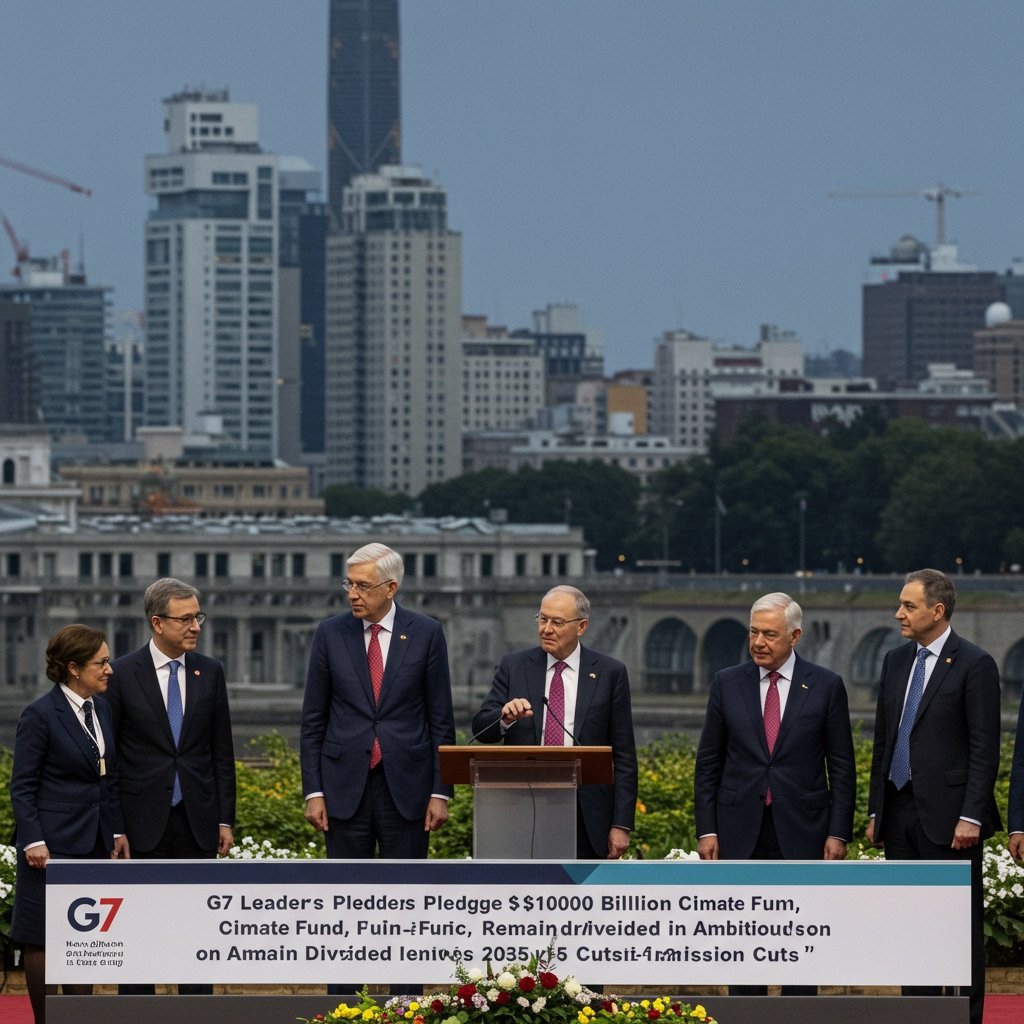G7 Summit Concludes in Rome with Mixed Results on Climate Action
Leaders from the Group of Seven (G7) nations concluded their highly anticipated summit in Rome on June 8, 2025, marking the end of intensive discussions focused on global challenges ranging from climate change and economic stability to technological governance and health security. The summit’s outcome presented a complex picture, showcasing both significant areas of agreement, particularly on financial commitments to climate initiatives in developing nations, and notable divisions, most prominently regarding the setting of specific, binding national emission reduction targets for 2035.
A central achievement highlighted in the summit’s final communique was a collective pledge to substantially increase financial aid for climate action in developing countries. The G7 members committed a combined total of $100 billion over the next five years. This significant sum is earmarked to support various climate initiatives, including renewable energy transitions, adaptation measures, and resilience-building projects in vulnerable nations. The pledge represents an acknowledgement of the historical responsibility of developed nations and the urgent need to mobilize resources to help less wealthy countries mitigate and adapt to the impacts of climate change.
Divisions Emerge on Ambitious 2035 Emission Targets
Despite the consensus on boosting climate finance, the summit revealed persistent disagreements over the pace and ambition of national emission reductions. Discussions around setting specific, binding 2035 national emission reduction targets proved particularly contentious, and ultimately, consensus remained elusive. While the European Union member states present at the summit strongly advocated for deep cuts, pushing for targets exceeding 60% reductions compared to baseline levels, key members like the United States and Japan favored less ambitious percentage targets. These nations cited different domestic circumstances, economic considerations, and technological readiness as factors influencing their positions.
The divergence on 2035 targets underscores the complex political and economic realities facing G7 nations as they navigate the transition to a low-carbon economy. While there is broad agreement on the long-term goal of net-zero emissions, the path and speed of getting there vary significantly among member states. The failure to align on specific, binding medium-term targets represents a challenge to presenting a united front on climate ambition ahead of broader international climate negotiations.
Addressing Global Economic Headwinds and Supply Chain Resilience
Beyond climate action, G7 leaders dedicated substantial time to deliberating on strategies to address prevailing global economic concerns. Discussions included potential coordinated responses to the current global economic slowdown, exploring measures to stimulate growth while managing inflation. A significant focus was also placed on strengthening supply chain resilience against future disruptions. Recent global events, including the pandemic and geopolitical shifts, have highlighted vulnerabilities in global supply networks. Leaders discussed diversifying sourcing, building strategic reserves, and fostering international cooperation to prevent future shortages and ensure the stable flow of essential goods.
Continued Cooperation on Health and Technology
The summit communique also reaffirmed the G7’s commitment to continued cooperation on global health security. Drawing lessons from the recent pandemic, leaders discussed strengthening global health systems, improving pandemic preparedness and response mechanisms, and ensuring equitable access to vaccines and medical countermeasures. This remains a priority area for the G7, emphasizing the interconnectedness of global health.
Furthermore, leaders addressed the rapidly evolving landscape of emerging technological challenges, with a specific focus on Artificial Intelligence (AI) governance. Discussions centered on developing shared principles and coordinating approaches to ensure the responsible development and deployment of AI technologies. This included exploring issues related to ethics, safety, intellectual property, and the potential societal impacts of AI, signaling a move towards establishing a framework for international cooperation in this critical domain.
In conclusion, the G7 summit in Rome on June 8, 2025, delivered a mixed but significant outcome. The collective pledge of $100 billion in climate finance represents a concrete step towards supporting developing nations. However, the inability to reach a consensus on specific, ambitious 2035 emission reduction targets highlighted persistent national differences in approaching the climate crisis. The summit also reinforced the G7’s commitment to tackling broader global issues, including economic stability, supply chain security, global health, and the governance of emerging technologies like AI, setting the stage for ongoing international cooperation on these critical fronts.





